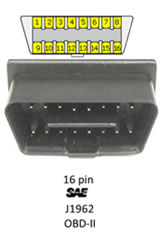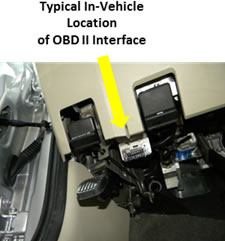Reinventing Your Wheels: Auto Convergence Technology
 Auto Convergence Technology Update
Auto Convergence Technology Update
The automotive industry is taking a giant step closer to the rest of the technological community as it prepares to open up its data platforms. This increased access to information is a big win for consumers and creates a whole new area of opportunities for automobile dealers.
Ford Motor Company is making revolutionary strides in technology with an announcement that its OpenXC platform is opening its software development kit to the public in order to encourage the building of new hardware and software.
According to the official website, OpenXC is an application programming interface for automobiles. Through the installation of a small hardware module that reads and translates metrics from a car’s internal network, the data can be accessed from most Android applications via the Ford OpenXC library.
The goal of this new interface, built on both the Arduino and Android platforms, is to allow complete access to data being created within the vehicle. Developers can build software programs to access, read, and complete new actions that will ultimately lead to improved driving experiences.
 Physical access to this data has been available since 1988, when the Society of Automotive Engineers established the Onboard Diagnostic Interface (OBD). Essentially the OBD provides an external interface into the electronic control module(s) or “computer” of an automobile to capture real time operational data via the vehicle’s Controller Area Network or CANBus.
Physical access to this data has been available since 1988, when the Society of Automotive Engineers established the Onboard Diagnostic Interface (OBD). Essentially the OBD provides an external interface into the electronic control module(s) or “computer” of an automobile to capture real time operational data via the vehicle’s Controller Area Network or CANBus.
 Now in second-generation status, the OBD-II specification provides for a hardware interface, a 16-pin (2×8) connector defined under the SAE J1962 standard. Unlike the initial OBD-I connector, which was sometimes found under the hood of an automobile, the OBD-II connector is required to be within two feet (0.61m) of the steering wheel. A separate specification from SAE, J1962, defines the electrical pin-out for this connector.
Now in second-generation status, the OBD-II specification provides for a hardware interface, a 16-pin (2×8) connector defined under the SAE J1962 standard. Unlike the initial OBD-I connector, which was sometimes found under the hood of an automobile, the OBD-II connector is required to be within two feet (0.61m) of the steering wheel. A separate specification from SAE, J1962, defines the electrical pin-out for this connector.
General OBD II applications include:
- Data loggers (devices that capture vehicle data while the vehicle is in normal operation for later analysis)
- Emissions testing
- Driver’s supplementary vehicle instrumentation
- Vehicle telematics
- PC-based scan tools and analysis platforms
- Mobile-device-based tools and analysis (i.e. a smartphone or tablet computer that displays and manipulates the OBD-II data accessed via USB adaptor cables or Bluetooth adapters plugged into the car’s OBD II interface)
Widespread application of the OBD-II began in earnest when the State of California mandated an automobile emissions testing program in the early 1990s. Since then, OBD-II has become widely accepted across the US for this initial application, beyond the proprietary automobile manufacturer-dealership relationship.
 Probably the single most recognizable, and one of the very first, consumer-targeted applications for a “plug-in” electronic module with an OBD-II interface is the Progressive Insurance Snapshot. This module captures and reports vehicle telematics as an inference to an operator’s driving ability, answering questions such as:
Probably the single most recognizable, and one of the very first, consumer-targeted applications for a “plug-in” electronic module with an OBD-II interface is the Progressive Insurance Snapshot. This module captures and reports vehicle telematics as an inference to an operator’s driving ability, answering questions such as:
- How often does an operator slam on the brakes?
- How many miles are being driven?
- How often is the vehicle driven between midnight and 4 a.m.?
Due to the amount and potential sophistication of the data captured within the Ford OpenXC platform, a device known as a vehicle interface or CAN translator is required. The vehicle interface is a piece of hardware that connects to an automobile’s CANBus and translates proprietary CAN messages to the OpenXC message format, sending its output over USB, Bluetooth, or Ethernet/Wi-Fi to a host device.
Most vehicle data is available on the CAN1 bus and all current vehicle interface modules connect with this bus. Some data is available only on the CAN2-1 or CAN2-2 buses; these buses are not available to all vehicle interface units and must be reviewed prior to implementation for a compatible binary interface.

The example above is a vehicle interface unit from Ford Motor Company that employs commercial off-the-shelf connector components (COTS). Third-party developers and manufacturers are now embracing the OpenXC platform with modules of their own conception to support a myriad of applications.
 One of these emerging developers is CrossChasm, with its C5 CANBus data logger, a hardware device that plugs into a vehicle OBD-II and enables a wide variety of OpenXC applications on both Android and iOS platforms. The C5 comes preloaded with OpenXC firmware and can be plugged into a car to be used immediately with any OpenXC app to address vehicle issues such as automatic notification of specific in-vehicle events; vehicle usage reporting; and CANBus analysis tools; with both performance and maintenance programs in mind.
One of these emerging developers is CrossChasm, with its C5 CANBus data logger, a hardware device that plugs into a vehicle OBD-II and enables a wide variety of OpenXC applications on both Android and iOS platforms. The C5 comes preloaded with OpenXC firmware and can be plugged into a car to be used immediately with any OpenXC app to address vehicle issues such as automatic notification of specific in-vehicle events; vehicle usage reporting; and CANBus analysis tools; with both performance and maintenance programs in mind.
With the advent and acceptance of Ford’s OpenXC platform, the need for new and creative hardware applications will follow, creating additional demand for electronic connector products in the immediate future.
- Satellites and 3D Radar Will Drive the Aviation Evolution - October 6, 2014
- Regenerative Braking Systems in Rail Applications - February 13, 2014
- Reinventing Your Wheels: Auto Convergence Technology - November 18, 2013

